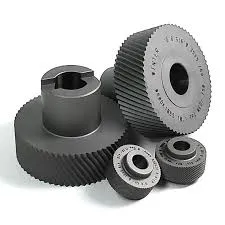
-
 Afrikaans
Afrikaans -
 Albanian
Albanian -
 Amharic
Amharic -
 Arabic
Arabic -
 Armenian
Armenian -
 Azerbaijani
Azerbaijani -
 Basque
Basque -
 Belarusian
Belarusian -
 Bengali
Bengali -
 Bosnian
Bosnian -
 Bulgarian
Bulgarian -
 Catalan
Catalan -
 Cebuano
Cebuano -
 Corsican
Corsican -
 Croatian
Croatian -
 Czech
Czech -
 Danish
Danish -
 Dutch
Dutch -
 English
English -
 Esperanto
Esperanto -
 Estonian
Estonian -
 Finnish
Finnish -
 French
French -
 Frisian
Frisian -
 Galician
Galician -
 Georgian
Georgian -
 German
German -
 Greek
Greek -
 Gujarati
Gujarati -
 Haitian Creole
Haitian Creole -
 hausa
hausa -
 hawaiian
hawaiian -
 Hebrew
Hebrew -
 Hindi
Hindi -
 Miao
Miao -
 Hungarian
Hungarian -
 Icelandic
Icelandic -
 igbo
igbo -
 Indonesian
Indonesian -
 irish
irish -
 Italian
Italian -
 Japanese
Japanese -
 Javanese
Javanese -
 Kannada
Kannada -
 kazakh
kazakh -
 Khmer
Khmer -
 Rwandese
Rwandese -
 Korean
Korean -
 Kurdish
Kurdish -
 Kyrgyz
Kyrgyz -
 Lao
Lao -
 Latin
Latin -
 Latvian
Latvian -
 Lithuanian
Lithuanian -
 Luxembourgish
Luxembourgish -
 Macedonian
Macedonian -
 Malgashi
Malgashi -
 Malay
Malay -
 Malayalam
Malayalam -
 Maltese
Maltese -
 Maori
Maori -
 Marathi
Marathi -
 Mongolian
Mongolian -
 Myanmar
Myanmar -
 Nepali
Nepali -
 Norwegian
Norwegian -
 Norwegian
Norwegian -
 Occitan
Occitan -
 Pashto
Pashto -
 Persian
Persian -
 Polish
Polish -
 Portuguese
Portuguese -
 Punjabi
Punjabi -
 Romanian
Romanian -
 Russian
Russian -
 Samoan
Samoan -
 Scottish Gaelic
Scottish Gaelic -
 Serbian
Serbian -
 Sesotho
Sesotho -
 Shona
Shona -
 Sindhi
Sindhi -
 Sinhala
Sinhala -
 Slovak
Slovak -
 Slovenian
Slovenian -
 Somali
Somali -
 Spanish
Spanish -
 Sundanese
Sundanese -
 Swahili
Swahili -
 Swedish
Swedish -
 Tagalog
Tagalog -
 Tajik
Tajik -
 Tamil
Tamil -
 Tatar
Tatar -
 Telugu
Telugu -
 Thai
Thai -
 Turkish
Turkish -
 Turkmen
Turkmen -
 Ukrainian
Ukrainian -
 Urdu
Urdu -
 Uighur
Uighur -
 Uzbek
Uzbek -
 Vietnamese
Vietnamese -
 Welsh
Welsh -
 Bantu
Bantu -
 Yiddish
Yiddish -
 Yoruba
Yoruba -
 Zulu
Zulu
best types of thread rolling
The Best Types of Thread Rolling An Overview
Thread rolling is a crucial process in the manufacturing industry, particularly for producing threaded fasteners, bolts, and screws. By cold working the material, this method creates strong, high-precision threads while minimizing waste. Understanding the various types of thread rolling techniques is essential for manufacturers looking to optimize production efficiency and product quality. This article will explore the different types of thread rolling, their advantages, and suitable applications.
Types of Thread Rolling
1. Flat Die Thread Rolling Flat die rolling is one of the most common types of thread rolling. In this method, a cylindrical workpiece is passed between two flat dies with specially designed thread profiles. The dies apply pressure, causing the material to flow and form threads. Advantages of flat die rolling include its ability to produce threads with high accuracy and strength.
Applications This method is often used for manufacturing screws and bolts, especially for applications where high torque or stress resistance is required.
2. Rotary Thread Rolling Rotary thread rolling utilizes cylindrical dies that rotate around the workpiece. This technique is excellent for producing long, continuous threads on a variety of materials. The rotary action allows for a smoother finish and improved material flow, making it ideal for high-volume production.
Applications Commonly used in the automotive and aerospace industries, rotary thread rolling is suited for producing long fasteners, such as those found in engine assemblies or structural components.
3. Thread Forming Thread forming is a unique rolling process that involves creating a thread without cutting. Instead, the material is displaced to form the desired thread profile. This method is especially useful for softer materials and can yield threads with high fatigue resistance.
Applications Ideal for applications that require precision threading without the material wastage associated with traditional cutting methods, thread forming is frequently used in electronics and machinery
.best types of thread rolling

4. Multi-Die Thread Rolling In some cases, multiple dies are employed to increase the efficiency of the thread rolling process. Multi-die thread rolling allows for simultaneous forming of various thread profiles, effectively reducing production time while ensuring uniform quality.
Applications This method is particularly beneficial in high-volume production environments, such as fastener manufacturing for consumer goods or automotive parts.
Advantages of Thread Rolling
The thread rolling process offers several significant advantages over traditional methods such as cutting
- Material Savings Thread rolling minimizes material waste by displacing rather than removing material, leading to cost savings. - Increased Strength The cold working process associated with thread rolling enhances the strength and durability of the threads due to strain hardening. - High Precision Thread rolling can achieve tight tolerances, making it an excellent choice for applications requiring precise specifications. - Faster Production Rates Due to the efficient nature of thread rolling, manufacturers can achieve higher production rates compared to cutting methods.
Choosing the Right Thread Rolling Method
Selecting the appropriate thread rolling method depends on various factors, including material type, required thread specifications, and production volume. Manufacturers must consider their specific needs and the advantages of each rolling technique to determine the most effective approach.
Conclusion
In summary, thread rolling is an efficient and effective method for producing high-quality threaded components. From flat die and rotary rolling to thread forming and multi-die techniques, each method offers unique advantages catering to different manufacturing needs. By understanding the best types of thread rolling, manufacturers can enhance product quality, reduce material waste, and improve production efficiency, ultimately leading to a more competitive position in the marketplace. As technology continues to advance, adopting the most suitable thread rolling method will be pivotal in meeting industry demands and ensuring long-term success.
